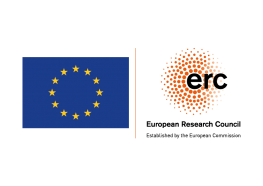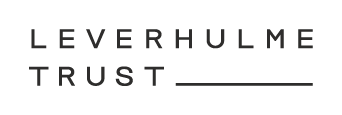Hollow Earth: Art, Caves & The Subterranean Imaginary
- Unknown photographer, Elisabeth Pauli at work in Northern Spain, 1936. Giclee print. Courtesy: The Frobenius Institute.
"A glorious meditation on geology, early art and shamanic visions", ★★★★ Hettie Judah, The Guardian
"A powerful and thought-provoking new exhibition", Helen Gordon, Apollo
Nottingham Contemporary presents Hollow Earth: Art, Caves and The Subterranean Imaginary, a major thematic exhibition which brings together a wide range of responses to the image and idea of the cave. It includes painting, photography, sculpture, sound, installation and video, as well as archives and architectural models, stretching from 1960 to today, alongside works from the 18th and 19th centuries.
Beneath Nottingham are over 800 caves, hand-carved into the sandstone bedrock. For centuries, they have played host to dwellings, mines, cellars and tanneries. Inspired by this subterranean city, Hollow Earth brings together 150 works by more than 50 artists to explore questions of thresholds, darkness and prehistory.
Every culture and religion has told stories about what lies beneath. Caves are where extraordinary events come to pass, the domain of gods and monsters, of births, burial and rebirth. Dark, dangerous and unstable, caves are places of visions and experiences both sacred and profane. More recently, they have become home to data farms, seed vaults and doomsday bunkers.
For thousands of years, these portals to the deep past have captivated artists. Some even argue that the cave was the earliest studio and the first museum. Following 19th-century discoveries of rock paintings, caves have been imagined as spaces of revelation, providing clues to the origin of our collective impulse to produce images. After World War II, artists came to associate the cave with the primordial creative space, a bunker-like refuge from the atomic era. Today, in an age of ecological breakdown, caves are portals to both the deep past and troubled futures, places where species and time intermingle.
Mapping specific sites and imaginary underworlds, Hollow Earth considers what draws us to the subterranean. The exhibition is divided into five sections, and echoes the journey into a cave, starting at the threshold and ending in the depths. Organised in collaboration with Hayward Gallery Touring, the exhibition features major works by René Magritte, Santu Mofokeng, Kaari Upson, Jeff Wall and Aubrey Williams, as well as new commissions from Sofia Borges, Emma McCormick-Goodhart, Goshka Macuga, Lydia Ourahmane and Liv Preston. In 2023, the exhibition will tour to The Glucksman in Cork and to RAMM in Exeter.
Hollow Earth: Art, Caves & The Subterranean Imaginary installation view at Nottingham Contemporary, 2022. Courtesy Nottingham Contemporary. Photos: Stuart Whipps.
Exhibition:
Hollow Earth: Art, Caves & The Subterranean ImaginaryDates:
24 Sep 2022 – 22 Jan 2023Artists:
- Hamed Abdalla, Lee Bontecou, Sofia Borges, Brassaï, The Center for Land Use Interpretation, Steven Claydon, Matt Copson, Juan Downey, Chioma Ebinama, Mary Beth Edelson, Laura Emsley, Barry Flanagan, Ilana Halperin, Frank Heath, Ed Herring, Michael Ho, Hans Hollein, Peter Hujar, Athanasius Kircher, Alison Knowles, Antti Lovag, Goshka Macuga, René Magritte, Gordon Matta-Clark, Emma McCormick-Goodhart, Santu Mofokeng, Henry Moore, Nadar, Ailbhe Ní Bhriain, Pauline Oliveros, Lydia Ourahmane, Gordon Parks, Flora Parrott, Walter Pichler, Giuseppe Pinot-Gallizio, Liv Preston, Ben Rivers, Robert Smithson, Michelle Stuart, N.H. Stubbing, Caragh Thuring, Kaari Upson, Jeff Wall, Aubrey Williams, Joseph Wright of Derby.
- It also includes materials from Drawing Matter, The Frobenius Institute, Nottingham City Council and Picture Nottingham, Nottingham City Museums & Galleries, Trent & Peak Archaeology, Manuscripts and Special Collections at the University of Nottingham.
Partners:
Hollow Earth: Art, Caves and the Subterranean Imaginary is a Hayward Gallery Touring exhibition, developed in partnership with Nottingham Contemporary and in collaboration with Glucksman, Cork and RAMM, Exeter.
Supporters:
This exhibition is generously supported by the Centre for the GeoHumanities, Royal Holloway, University of London, as part of a project that has received funding from the European Research Council (ERC) under the European Union’s Horizon 2020 research and innovation programme (Grant agreement No. 863944 THINK DEEP) and the Leverhulme Trust through the Phillip Leverhulme Prize.



